So you have one, two, three, or more hermit crabs in a tank. You look away for a second and one of them has disappeared. Where did it go? It’s probably hiding somewhere… waiting for the lights to turn off before coming out again. Or… could it be something else?
Molting hermies have a tendency to hide away or bury themselves in their substrate. This can cause confusion for new enthusiasts who may mistake this behavior as that of a dying critter. But the two are quite different, and it’s important to be able to tell them apart.
So, how do we tell if it is dead or just molting?
What Exactly Is Molting?
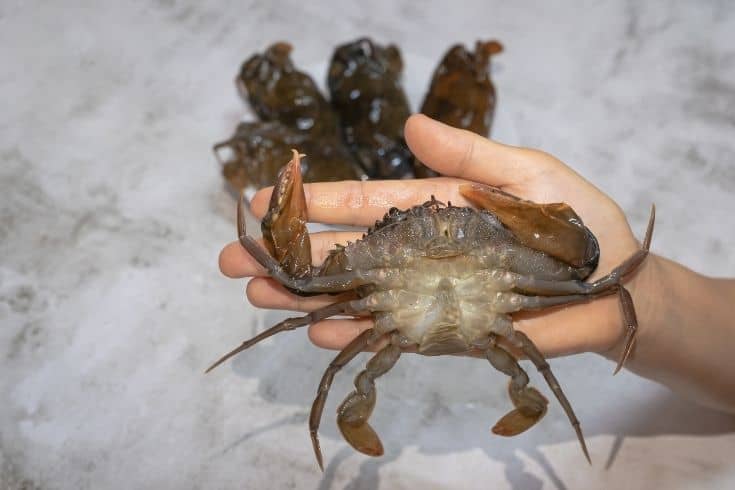
Before we can tell if your pet is dead or just molting, it’s important to first know what the process actually looks like.
Hermit crabs have exoskeletons that periodically need to be shed as its body grows. This process happens a couple of times throughout its lifetime, and it is called molting.
In general, these critters molt during nighttime since they’re nocturnal. This is a critical time for them since they’re extremely vulnerable. You should do your best to care for them during this period.
What To Look For In A Molting Hermit Crab
There are a few things you’ll want to watch out for while molting takes place.
First, your crab may start to “wiggle” out of his shell and climb around while trying to get out. Sometimes this can result in some severe damage, so be careful. It may also dig into a bit of sand or substrate and “bury” itself in a downward position.
During the actual process, you may see that its exoskeleton looks like it has an opening. This opening is where the new exoskeleton will come out of, and this can be very alarming to new owners who aren’t familiar with the process. However, it’s important to stay calm and observe carefully.
Finally, after everything is over and done with, you’ll notice that little hermie now has a much larger exoskeleton. It may be a bit “wobbly” while it gets used to the new shell, and it may also have difficulty moving around because its’ body is still soft.
Is It Dead or Just Molting?
The difference between a dead crab and one that is molting can be difficult to distinguish. After all, one that has just molted looks about the same as a dead one. Why? It’s because the one that is about to molt or has recently molted can take on a ghostly appearance. They may seem to be transparent, with little or no color, and they appear limp.
However, there are several key ways to tell between these two states. Read below to discover how to know which one you have!
Can You Spot Pieces Of Exoskeleton?
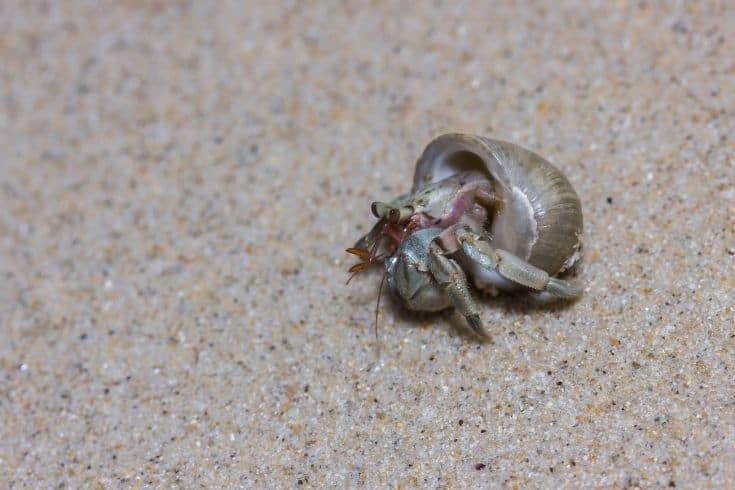
A molting crab hides until it feels safe to come out again. Therefore, if you spot pieces of ashy exoskeleton near the tank or on the floor, your pet is most likely molting. During this time, you may also see your hermie’s soft, fleshy body between its shell.
On the other hand, a deceased crab will remain stiff after death, and its exoskeleton will not appear ashy and transparent. The shell will also remain hard and intact, and the body may be bloated or bloated with air depending on how long it has been dead.
You can check if it is alive by touching the ghostly hermie with a spoon or tongs. If it is still alive, it will curl its soft body into the shell.
Do You Smell a Strange Odor?
A dead hermit crab will start to emit a fishy smell as its body decays and gets eaten by other crabs. A molting one does not emit this smell since it has just recently molted, and it is still soft and vulnerable.
This rotten smell is actually a sign that its tankmates are feasting on the deceased individual’s body. For example, you might notice sand falling into the tank as other hermies climb up to take a bite.
If you suspect that your pet is dead, all you need to do is lean in and take a closer whiff. A foul smell is a distinctive sign that your crab is dead
Are There Any Signs Of Decomposition?
A dead crab will decompose quickly, especially if it has been dead for a long time. This reliable sign of death features a bloated, discolored, and smelly dead body that can be crawling with tiny bugs.
In contrast, a molting hermit is still alive and able to move around at this time. They may even continue to eat and drink like normal until it’s time for them to molt. However, if it is dead, you may not see any sign of life; no movement, breathing, or eating.
Do note that while decomposition may be a gradual process when it comes to most creatures, these critters are different. In fact, you can watch, smell or even feel it die in the span of minutes.
Is The Body Limp?
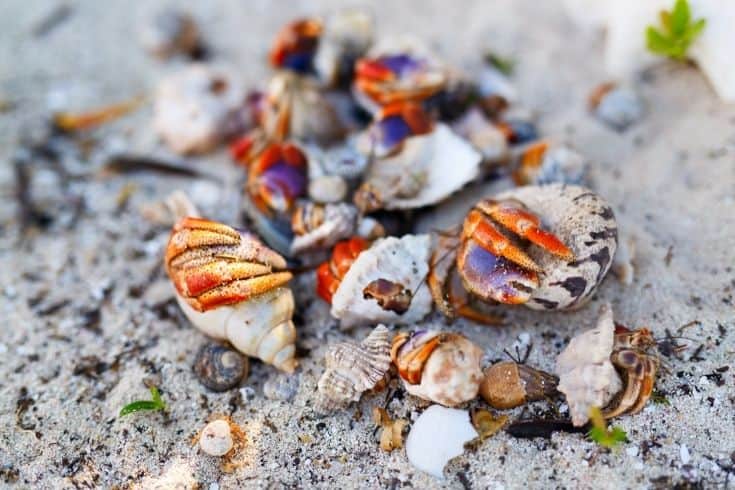
If you cannot tell if your crab is dead or molting, you can take a closer look at it to see if it is limp. A dead individual will be stiff and tough, whereas one that has just molted will be very soft and vulnerable to the touch.
If your pet seems wobbly when you move its legs, then it’s probably just molting. Crabs that are about to molt will also flex their claws. These signs of limpness and movement are tell-tale signs that it is alive and well, in spite of its ghostly appearance.
In contrast, a dead one will stay stiff and inflexible as it decays. If you give it a poke, it won’t be nearly as squishy as one that has just discarded its exoskeleton, as these critters will still very vulnerable to touch at this time.
Do The Antennae Point Up?
Finally, one of the best ways you can tell the difference is by observing the antennae. A crab that has just molted will have its antennae pointing down because it is vulnerable at this time. The poor hermie lacks the strength to lift them against gravity because they are too limp and soft.
Meanwhile, if the antennae are up, then your pet may be dying or dead. In fact, a dead hermie’s antennae will be hard and stiff while molting crabs’ antennae remain soft and point downwards until they are dry.
So, if you find your hermie acting strange, don’t hesitate to double-check these signs before jumping to conclusions. It’s better to be safe than sorry when it comes to our pets!
How To Care For Your Molting Pet
Have you determined that your hermit crab is indeed molting and not dead? That’s fabulous news! Although it may seem like a time of vulnerability for your pet, this is actually a very natural and necessary process for them to go through. Here’s how to care for your molter during this time:
Place It In A Safe Place
One of the best things you can do for your pet is to place it in an isolation tank. This is important if you have other crabs in the tank, as they may mistake molter for a dead one, and decide to eat it in its weakened state. So, if you see your other crabs trying to approach the molter, move it to a secluded area so that they can’t get near it.
To create an isolation tank, you should place your molter in a clean, empty, 5 gal tank. A molting hermie needs fresh air, so it’s important that you leave the lid of your isolation tank open or use mesh wire to cover the top.
You’ll also want to install a moist paper towel inside the tank as this is another porous surface for your molter to cling onto.
Change The Water Every Day
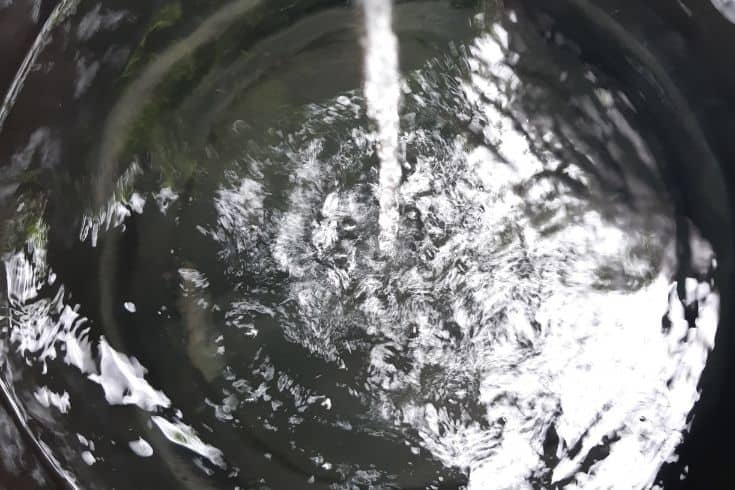
It’s also important that you change out the water in your isolation tank every day, or at least every other day. This is because hermies are very sensitive to bacteria and chemicals in their environment. If the substrate is not kept clean, then they may become sick.
Be sure to use a water conditioner when changing the water in your isolation tank, since tap or well water may contain harmful chemicals that can harm your pet.
You can also opt for bottled spring water or distilled water that’s been remineralized, but always test the pH level before adding the water. No matter which option you opt for, steer clear of fluctuations in water chemistry, which can prove fatal.
Learn More: Best Water For Your Fish Tank
Check That Your Pet Has Enough Substrate
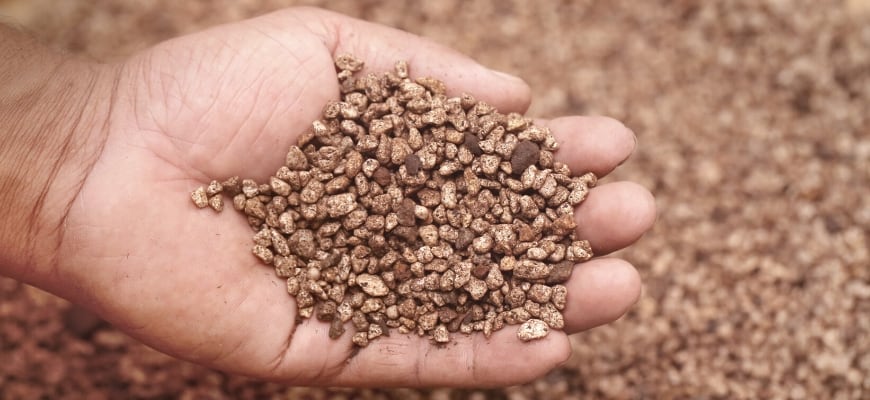
Burrowing is very important for molting crabs because it creates a moist environment that helps dissolve nutrients in the exoskeleton. This is why you should provide your pet with plenty of substrates so that it can bury under it. We recommend a 2-3 inch depth of substrate at the very least.
The substrate should be fairly damp, but not sopping wet. To check the moisture level, grab a handful of the substrate and squeeze it together with your fingers. If three or four drops come out, then the humidity level is perfect.
However, if you find that your substrate is too moist, simply remove some by scooping it out of the tank with a spoon. If the substrate has become way too dry, then pour a little bit of water on top and let it sit for about ten minutes to re-moisten.
Related: How Many Bags of Substrate Do You Need?
Prepare Extra Shells
Hermes doesn’t always change shells when they molt as these are two distinct processes. However, if your pet is planning to change into a new shell, then it will need one ready when the time comes. These coveted shells keep your pet safe, which is why it’s important that you have enough available whenever molting takes place.
You can use a variety of shells for your pet, including the correct-sized one that it already has. However, if you notice that your pet is struggling to fit into its current shell, then go shopping for a new shell.
Choose shells with holes so that it’s easier for your pet to breathe after the molt. Also, check the water flow in the new shell to ensure that there isn’t too much or too little.
Feed Your Pet Appropriately
Another way you can care for your molter is by providing the right food for it to eat. The key to proper nutrition during molting is to offer your crab nutritious foods that are high in proteins, lipids, carbohydrates, and digestive enzymes.
This includes bivalve mollusks (such as clams and mussels), coconuts (which contain fiber), cornmeal (for carbs), leafy greens (such as kale), almond butter, and eggs.
It’s very important that you avoid feeding your pet any foods that are high in sugar or sodium, since these may inhibit its ability to molt properly.
Change Its Substrate Daily
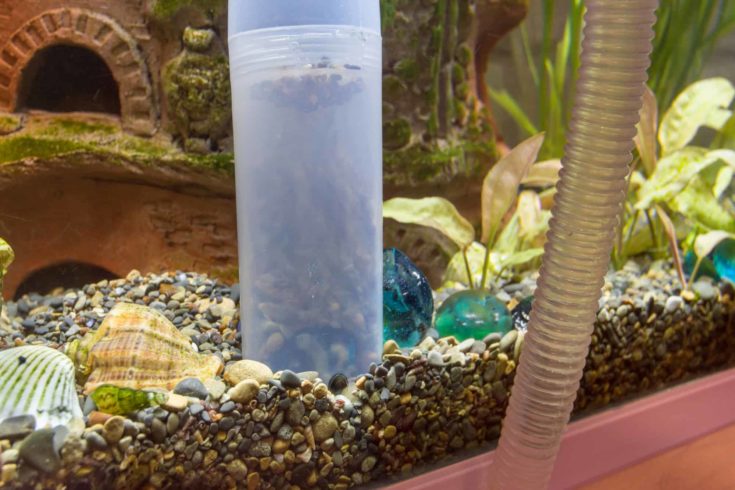
Finally, you should also change out your molter’s substrate every day or at least multiple times per week. This is because shells and other debris will pile up during the molting process, making it harder for your pet to get around.
You may notice waste products such as uric acid and feces throughout the entire process but discard them promptly if you don’t want your pet to become ill.
To make cleaning easier, place your pet’s substrate in a colander and run it under some hot water until it has filtered out all the debris. Then simply put the substrate back into the tank and rinse it off with dechlorinated water (you can buy this at any pet store).
Conclusion
There you have it! That’s everything you need to know about how to differentiate between a molting hermit crab and a dead one, as well as how to care for your pet during this vulnerable time. Follow our expert tips, and you’ll know precisely how to care for your pets, no matter what state they may be in.
We hope you enjoyed this article! If you did, please support us by sharing this article with your friends! Thank you for your support and good luck with your pet hermies!
Do you have a hermit crab? What did you do to care for it? Let us know in the comments below!
See also: 11 Types of Freshwater Aquarium Crabs
